Australian Tropical Rainforest Plants - Online edition
Carissa laxiflora Benth.
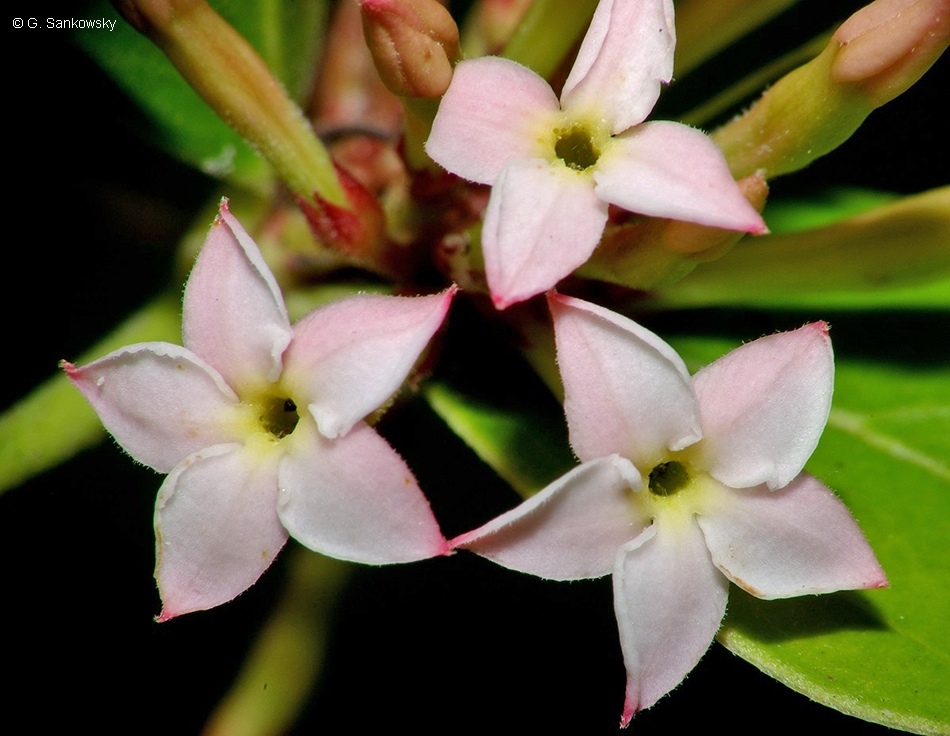
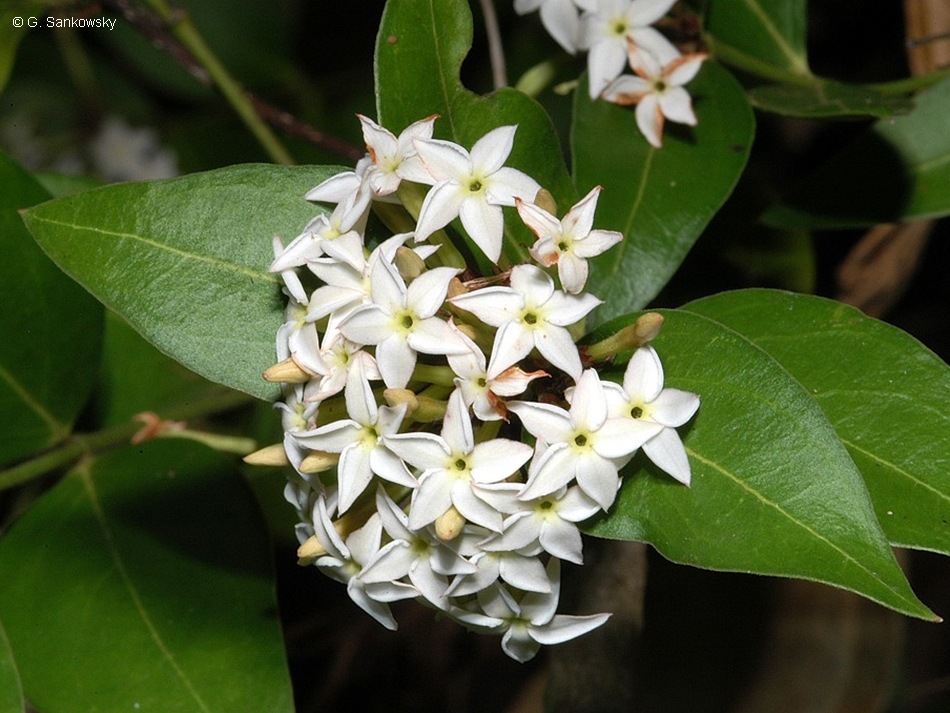
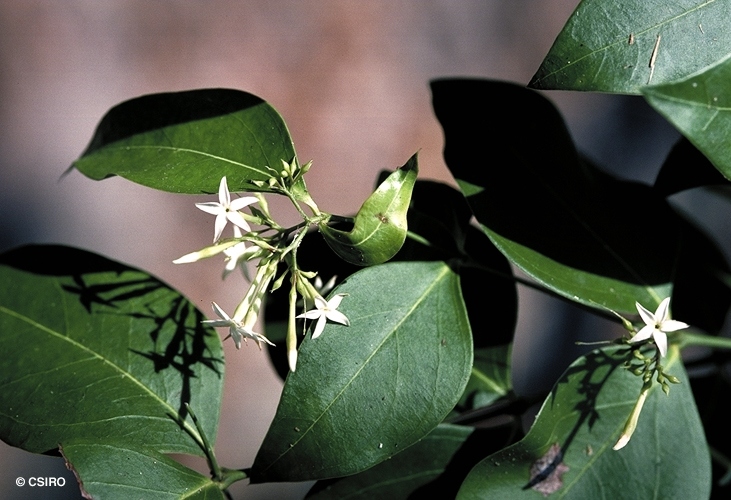
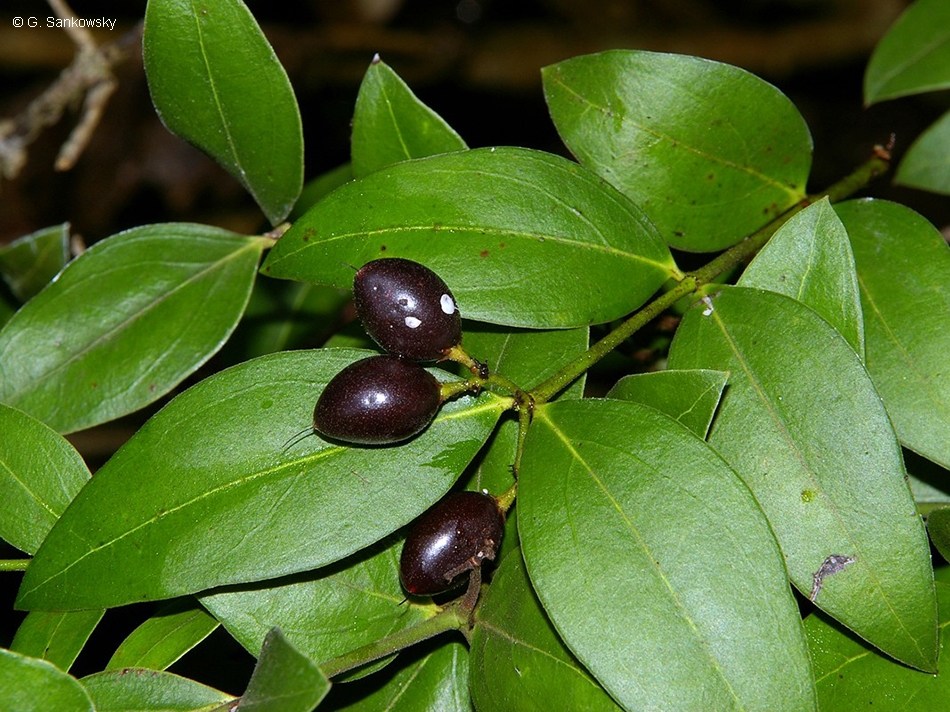



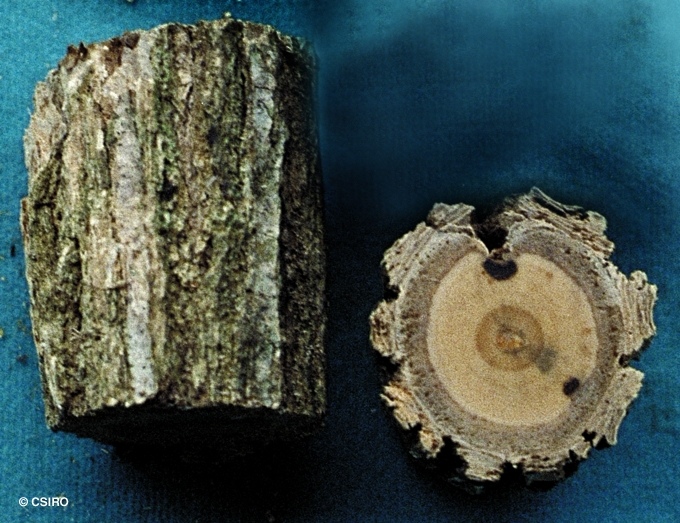
Bentham, G. (1868) Flora Australiensis 4: 305. Type: Queensland, Cape York, 27 Oct. 1849, J. McGillivray; holo: K.
Usually grows as a vine but can flower and fruit as a shrub. Vine stem diameters to 5 cm recorded. Blaze odour strong and unpleasant.
Twigs and petioles produce a milky exudate. Stipular (?) thorns occasionally present, thorns about 10-20 mm long. Leaf blades about 30-80 x 11-50 mm, petioles about 2-5 mm long. Lateral veins difficult to distinguish, about 4 or 5 on each side of the midrib, curving inside the blade margin but not forming distinct loops.
Flowers about 5-7 mm diam. Calyx lobes acute or attenuate at the apex, about 2-3 mm long overall. Corolla tube green, about 8-10 mm long, slightly swollen just below the throat, glabrous on the outer surface, hairy on the inner surface, lobes white or cream, about 2.8-4 mm long, hairy on the inner and outer surfaces. Anthers about 1-1.6 x 0.4-0.6 mm, filaments about 0.2 mm long. Style about 7-8 mm long. Stigma and anthers included in the corolla tube.
Cotyledons elliptic to orbicular, about 10-20 x 9-16 mm. First pair of leaves opposite and ovate to elliptic. At the tenth leaf stage: leaves ovate, apex apiculate, stipules very small and inconspicuous. Spines sometimes present between the petioles of each pair of leaves. Stems and petioles produce a milky exudate. Very small dark glands present on the stem between the petioles. Seed germination time 55 to 152 days.
Food plant for the larval stages of the Common Crow Butterfly. Sankowsky & Neilsen (2000).
This species is recognised in some other parts of Australia and in Asia as Carissa spinarum L.





